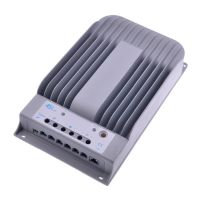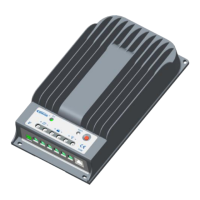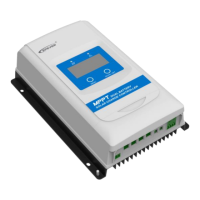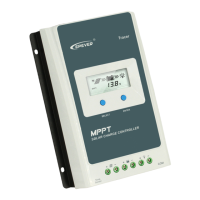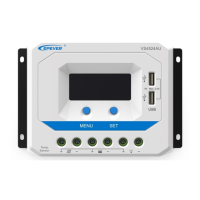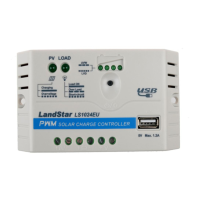1.4 Maximum Power Point Tracking Technology
Due to the nonlinear characteristics of the solar array, there is a maximum energy output point (Max
Power Point) on its curve. Traditional controllers, equipped with switch charging technology and PWM
charging technology, can't charge the battery at the maximum power point and cannot obtain the
maximum energy available from the PV array. In contrast, the solar charge controller with Maximum
Power Point Tracking (MPPT) Technology can lock the point to obtain the maximum energy and deliver it
to the battery.
Our company's MPPT algorithm continuously compares and adjusts the operating points to locate the
array's maximum power point. The tracking process is fully automatic and does not need the user's
adjustment.
As Figure 1-2, the curve is also the array's characteristic curve; the MPPT technology will 'boost' the
battery charge current through tracking the MPP. Assuming 100% conversion efficiency exist in the solar
system, the following formula is established:
Normally, the V
Mpp
is always higher than V
Bat
. Due to the principle of energy conservation, the I
Bat
is
always higher than I
PV
. The greater the difference between V
Mpp
&V
Bat
, the greater the difference between
I
PV
& I
Bat
. The greater the difference between the array and the battery will also decrease the system
conversion efficiency. Therefore, the controller's conversion efficiency is particularly important in the PV
system.
Figure 1-2 is the maximum power point curve, whose shaded area is the traditional solar charge
controller (PWM Charging Mode). It is known that the MPPT mode can improve solar PV usage.
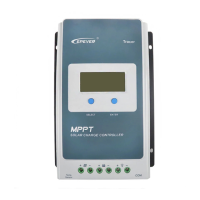
